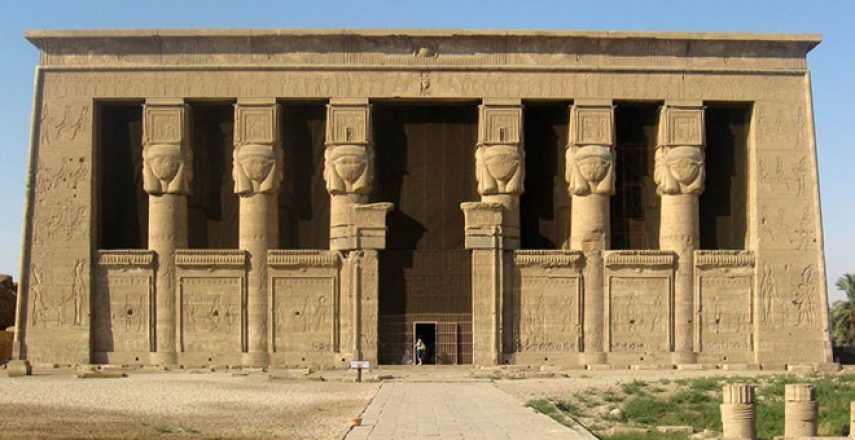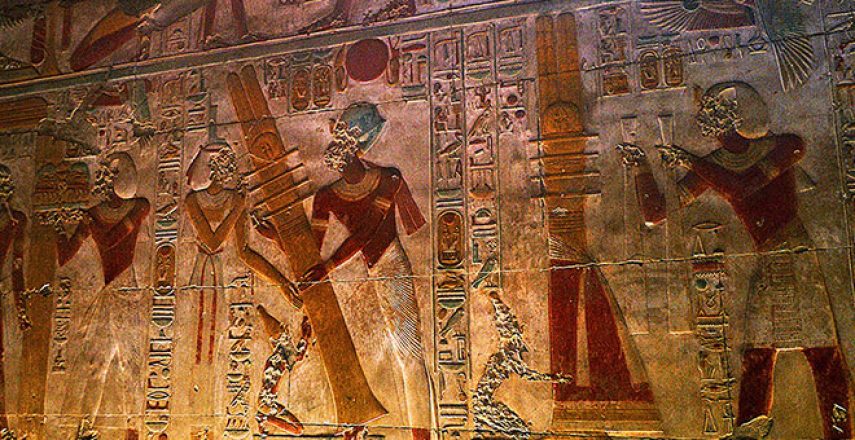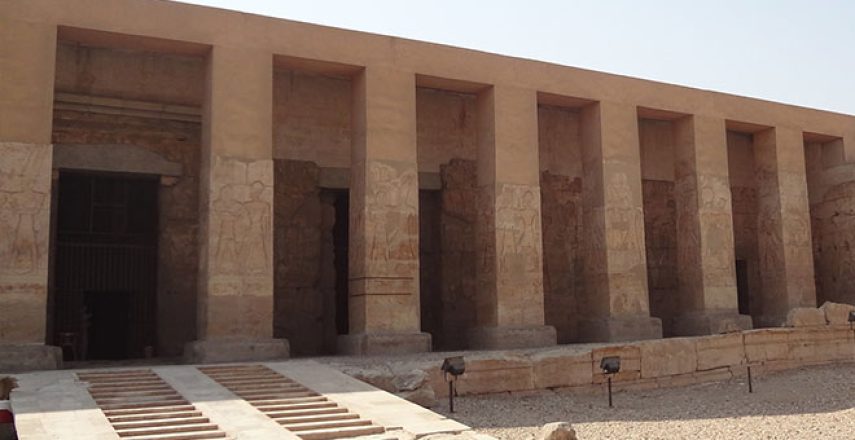


Abydos is one of the most ancient cities of Upper Egypt, located about 135 kilometers from Luxor in Egypt. Abydos is located about 300 miles south of Cairo on the western side of the Nile and about 9.5 miles from the river. It spreads over 5 square miles and contains archaeological remains from all periods of ancient Egyptian history. It was significant in historical times as the main cult center of Osiris, the lord of the netherworld.
Abydos is also considered one of the most important archaeological sites of Ancient Egypt; the sacred city of Abydos was the site of many ancient temples in Egypt, including Umm el-Qaab, a royal necropolis where early pharaohs were entombed. These tombs began to be seen as extremely significant burials and in later times it became desirable to be buried in the area, leading to the growth of the town s importance as a cult site.
Great Osiris Temple
Successively from the Egypt`s first dynasty to the Egypt`s twenty-sixth dynasty, nine or ten temples were built on one site at Abydos Egypt. The first was an enclosure, about 30 × 50 ft (9 x 15 m), surrounded by a thin wall of unbaked bricks. Incorporating one wall of this first structure, the second temple of about 40 ft (12 m) square was built within a wall about 10 ft (3 m) thick. An outer enclosure wall surrounded the grounds. This outer wall was thickened about the second or third dynasty. The old temple entirely vanished in the fourth dynasty, and a smaller building was erected behind it, enclosing a wide hearth of black ashes.
At an undetermined date, a great clearance of temple offerings had been made and a modern discovery of a chamber into which they were gathered has yielded the fine ivory carvings and the glazed figures and tiles that show the splendid work of the first dynasty. A vase of Menes with purple hieroglyphs inlaid into a green glaze and tiles with relief figures are the most important pieces found. The noble statuette of Cheops in ivory, found in the stone chamber of the temple, gives the only portrait of this great pharaoh.
The temple was rebuilt entirely on a larger scale by Pepi I in the sixth dynasty. He placed a great stone gateway to the temenos, an outer temenos wall and gateway, with a colonnade between the gates. His temple was about 40 × 50 ft (12 x 15 m) inside, with stone gateways front and back, showing that it was of the processional type. In the eleventh dynasty Mentuhotep I added a colonnade and altars. Soon after, Mentuhotep II, who unified the two lands of Egypt, entirely rebuilt the temple, laying a stone pavement over the area, about 45 ft (14 m) square and added subsidiary chambers. Soon thereafter in the twelfth dynasty, Senusret I laid massive foundations of stone over the pavement of his predecessor. A great temenos was laid out enclosing a much larger area and the new temple itself was about three times the earlier size.
Seti Temple I
Seti Temple of Seti I, Abydos The temple of Seti I was built on entirely new ground half a mile to the south of the long series of temples just described. This surviving building is best known as the Great Temple of Abydos, being nearly complete and an impressive sight. A principal purpose of it was the adoration of the early pharaohs, whose cemetery, for which it forms a great funerary chapel, lies behind it. The long list of the pharaohs of the principal dynasties—recognized by Seti—are carved on a wall and known as the “Abydos King List” (showing the cartouche name of many dynastic pharaohs of Egypt from the first, Narmer or Menes, until his time)- with the exception of those noted above. There were significant names deliberately left out of the list. As rare as an almost complete list of pharaoh names, the Table of Abydos, re-discovered by William John Bankes, has been called the “Rosetta Stone” of Egyptian archaeology, analogous to the Rosetta Stone for Egyptian writing, beyond the Narmer Palette.
There also were seven chapels built for the worship of the pharaoh and principal deities. At the back of the temple is an enigmatic structure known as The Osorio thought to be connected with the worship of Osiris (Caulfield, Temple of the Kings); and probably from those chambers led out the great Hypogeum for the celebration of the Osiris mysteries, built by Merenptah (Murray, The Osireion at Abydos). The temple was originally 550 ft (168 m) long, but the forecourts are scarcely recognizable, and the part still in good condition is about 250 ft (76 m) long and 350 ft (107 m) wide, including the wing at the side.
Except for the list of pharaohs and a panegyric on Ramses II, the subjects are not historical, but mythological. The work is celebrated for its delicacy and artistic refinement, but lacks the life and character of that in earlier ages. The sculptures had been published mostly in hand copy, not facsimile, by Auguste Mariette in his Abydos.
Ramses II temple, the adjacent temple of Ramses II in Egypt was much smaller and simpler in plan; but it had a fine historical series of scenes around the outside that lauded his achievements, of which the lower parts remain. The outside of the temple was decorated with scenes of the Battle of Kadesh. His list of pharaohs, similar to that of Seti I, formerly stood here; but the fragments were removed by the French consul and sold to the British Museum.
The Royal necropolis of the earliest dynasties were placed about a mile into the great desert plain, in a place now known as Umm el-Qaab, The Mother of Pots, because of the shards remaining from all of the devotional objects left by religious pilgrims. The earliest burial is about 10 × 20 ft (3 x 6 m) inside, a pit lined with brick walls, and originally roofed with timber and matting. Others also built before Menes are 15 × 25 ft (4.6 x 7.6 m).
The probable tomb of Menes is of the latter size. Afterward the tombs increase in size and complexity. The tomb-pit is surrounded by chambers to hold offerings, the sepulcher being a great wooden chamber in the midst of the brick-lined pit. Rows of small pits, tombs for the servants of the pharaoh surround the royal chamber, many dozens of such burials being usual. Some of the offerings included sacrificed animals, such as the asses found in the tomb of Merneith. Evidence of human sacrifices exists in the early tombs, but this practice was changed into symbolic offerings later.
By the end of the second dynasty the type of tomb constructed changed to a long passage bordered with chambers on either side, the royal burial being in the middle of the length. The greatest of these tombs with its dependencies, covered a space of over 3,000 square kilometers (740,000 acres), however it is possible for this to be several tombs which have met in the making of a tomb; the Egyptians had no means of mapping the positioning of the tombs. The contents of the tombs have been nearly destroyed by successive plunderers; but enough remained to show that rich jewelry was placed on the mummies, a profusion of vases of hard and valuable stones from the royal table service stood about the body, the store-rooms were filled with great jars of wine, perfumed ointments, and other supplies, and tablets of ivory and of ebony were engraved with a record of the yearly annals of the reigns. The seals of various officials, of which over 200 varieties have been found, give an insight into the public arrangements.